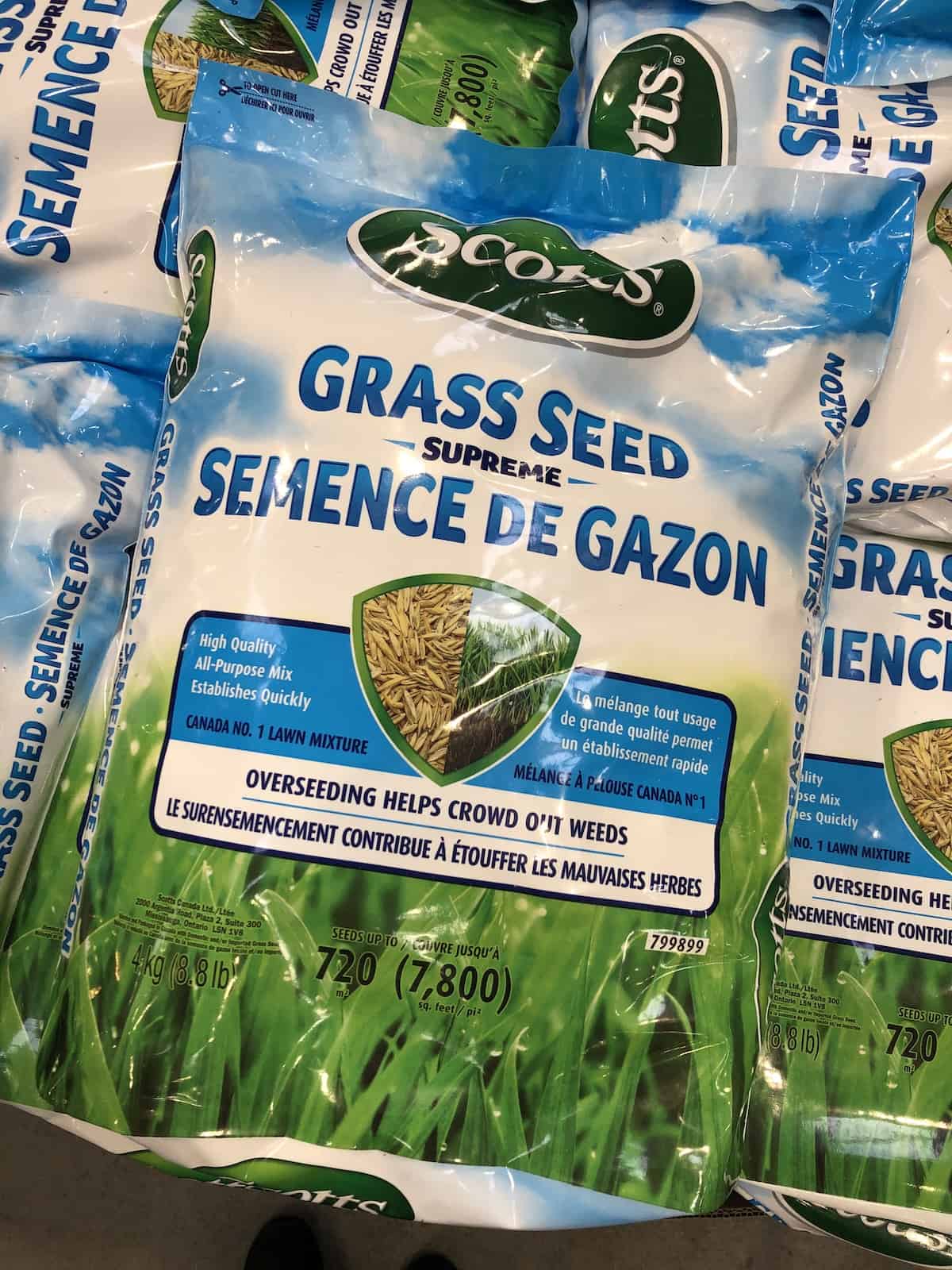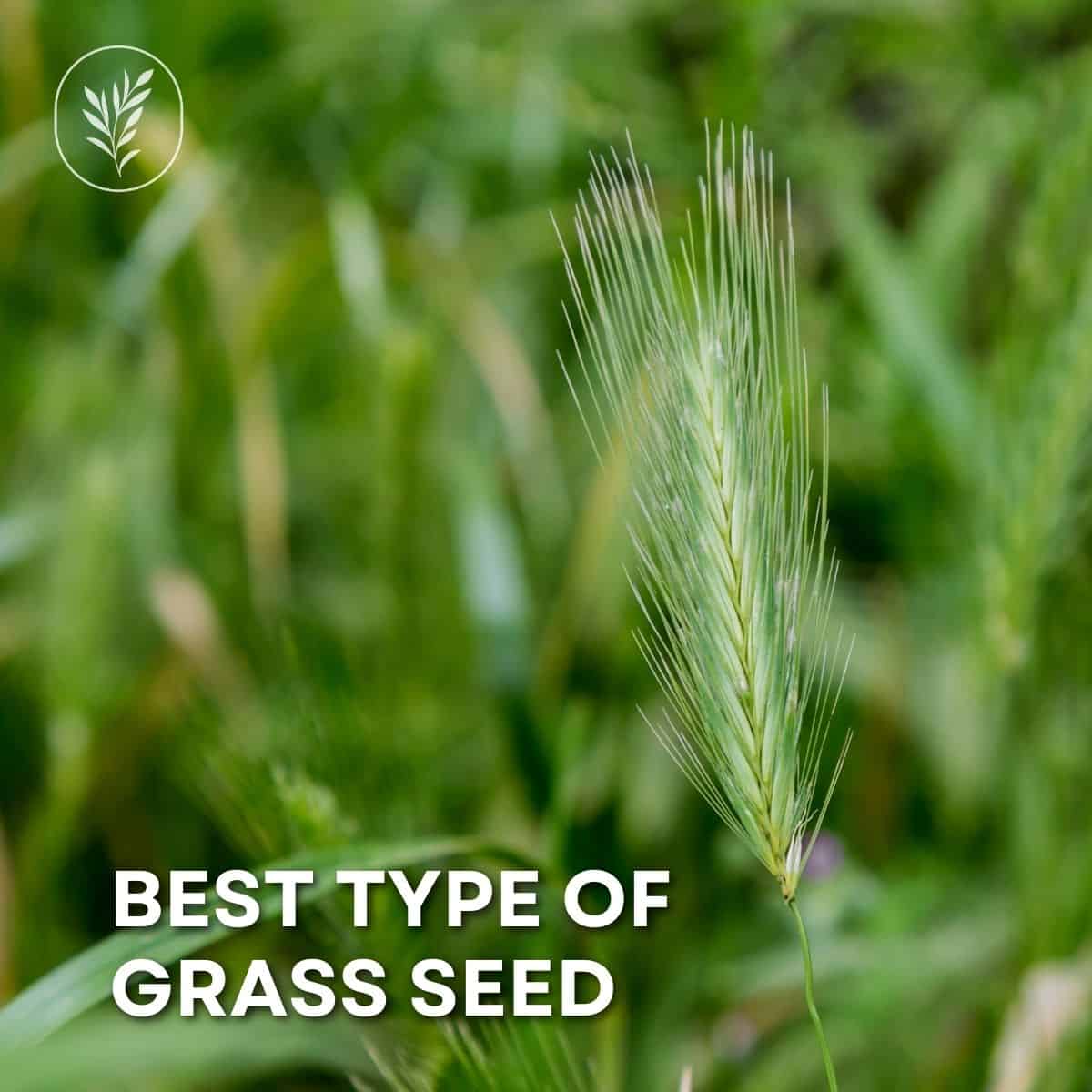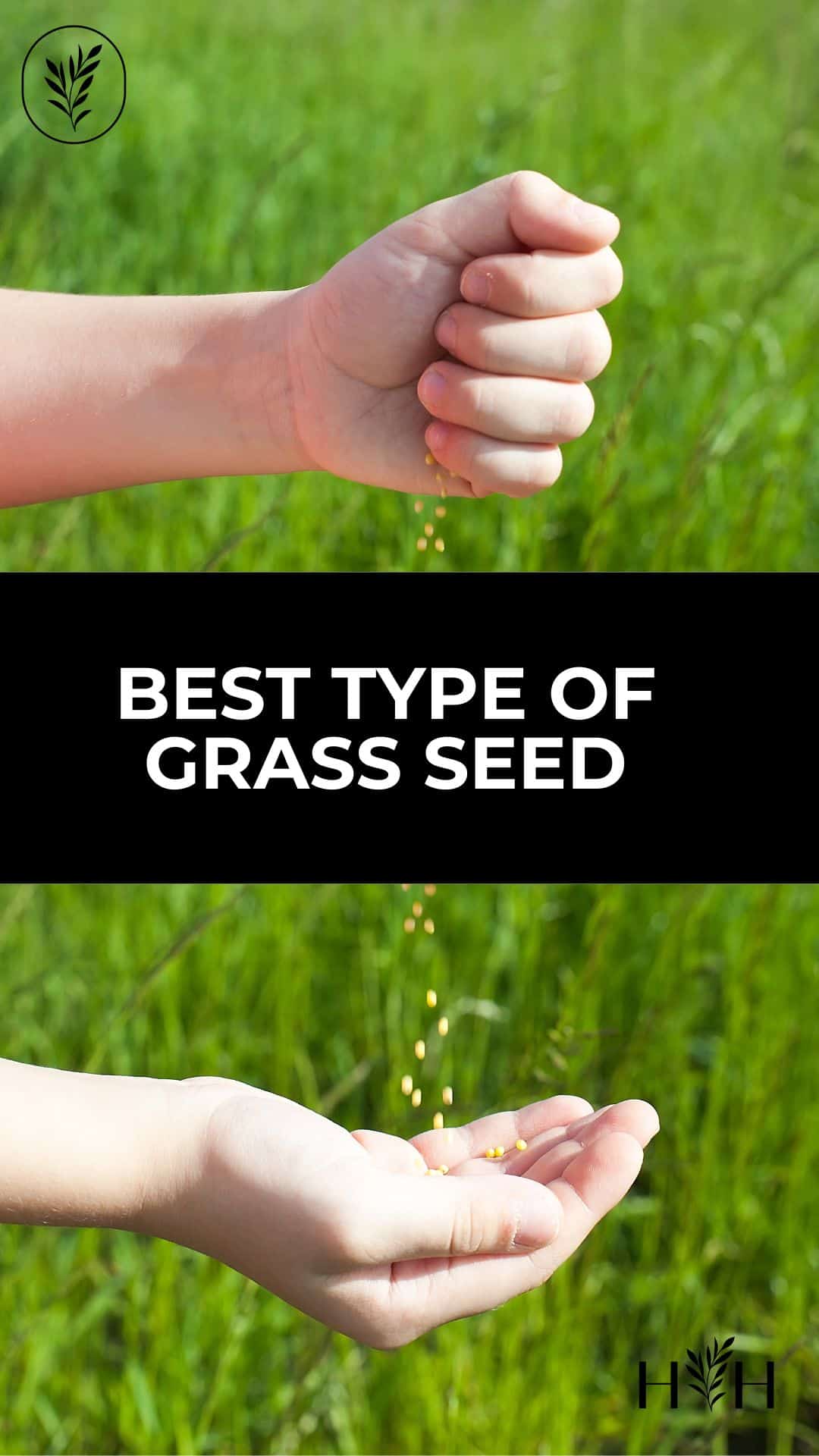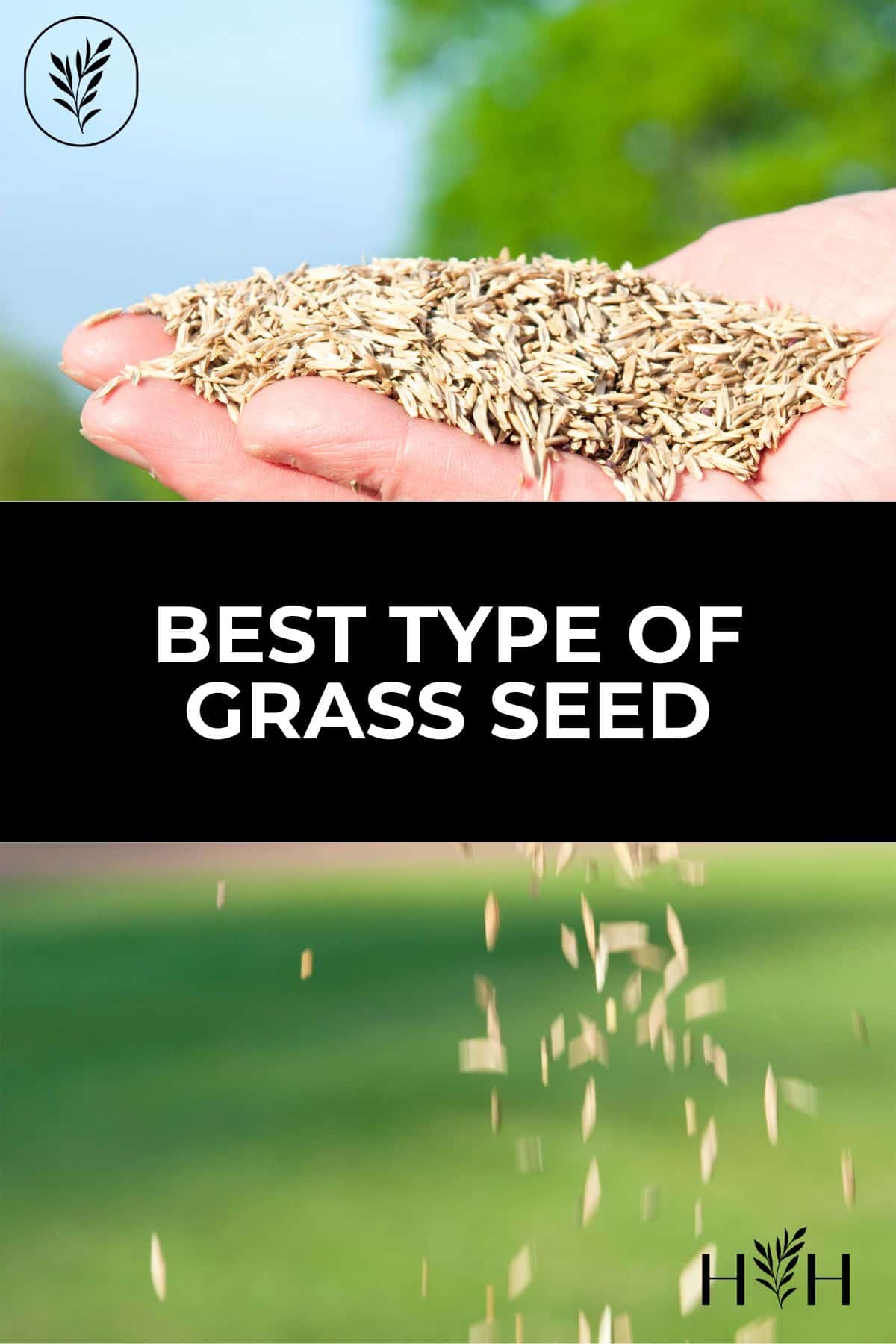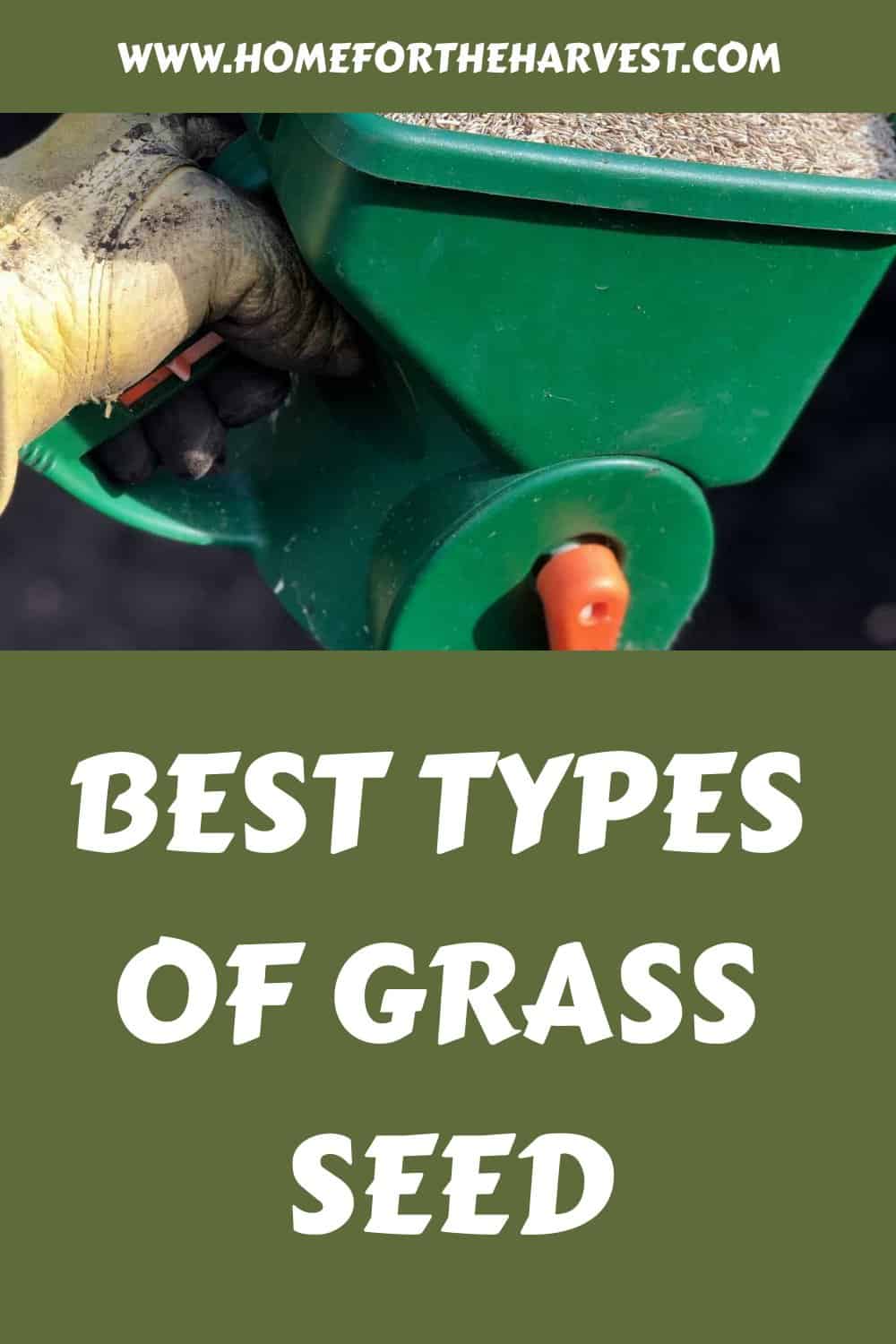Take the time to find the best type of grass seed for your lawn. Choosing the right type of turf grass from the start will make or break your lawn. Here are some of the best types of grass to choose for your lawn:
- Kentucky Bluegrass (Northern Lawns)
- Bermuda Grass (Southern Lawns)
Bluegrass and Bermuda Grass are top choices for turf-type grasses on residential lawns because they are attractive, durable, and self-healing. That being said, there are certainly situations where a different type of grass or a particular mix of different types would be preferable. Read on to learn all about choosing the best types of grass seed for your lawn.
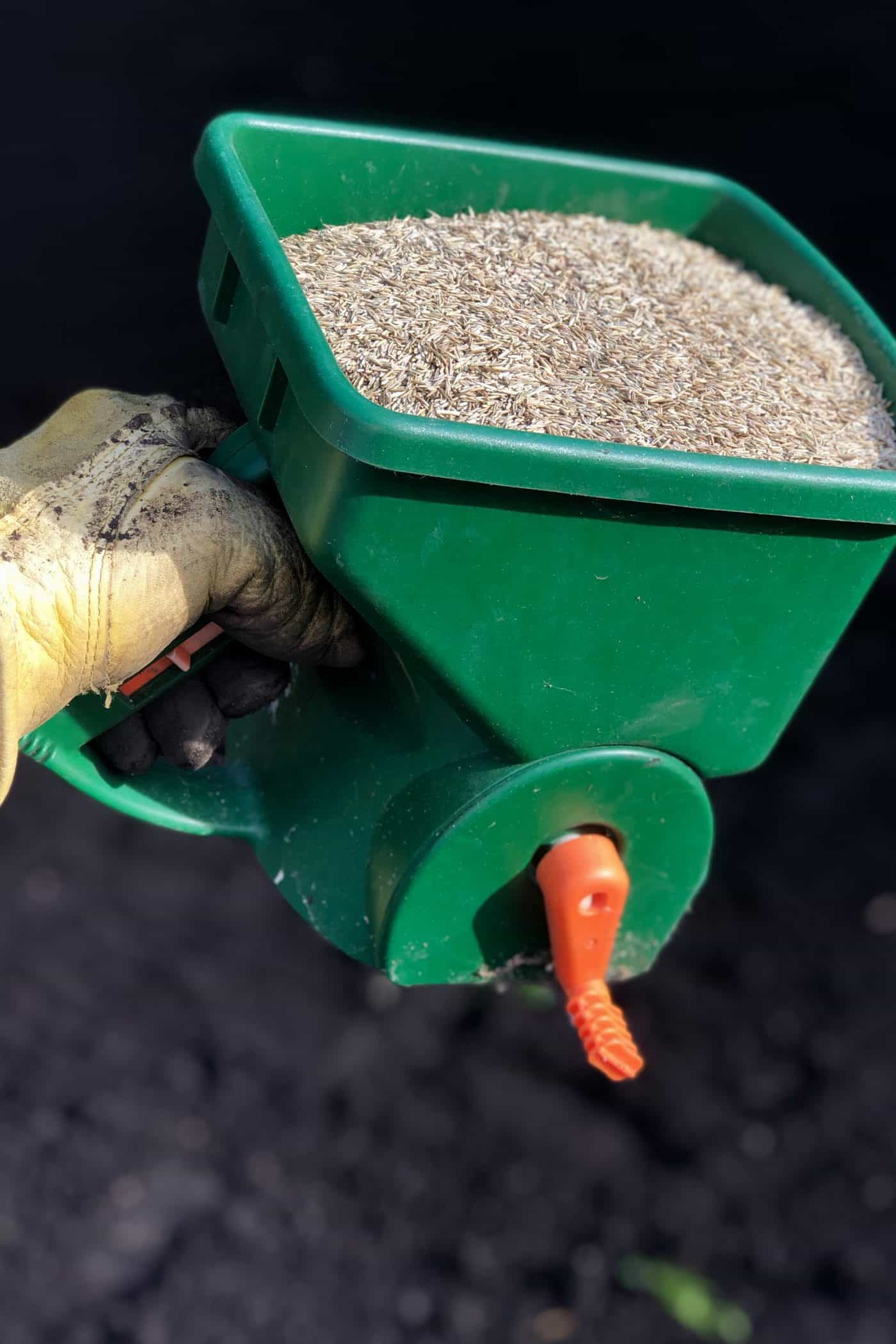
“A key part of planning for low maintenance is selecting the right grasses for your site. Lawn grasses – or turf grasses, as they are technically called – are extremely sensitive to their environment. Your climate, light and shade conditions, and soil type all affect which grasses will thrive there and which will need a great deal of maintenance to survive.”
Rodale’s Successful Organic Gardening: Lawns, Grasses and Groundcovers, by Lewis Hill & Nancy Hill
Choosing the best type of grass seed for your lawn
Choosing the best type of grass seed for your lawn involves:
- Decide if you’ll grow cool-season grass, warm-season grass, or both.
- Consider the environmental context of your lawn (sun, shade, dry….)
- Consider the purpose of your lawn (curb appeal, kids’ play area, pet grass…)
Consider these three factors before setting off to choose the best type of grass seed for your lawn. I’ve also had much better results with brand-name products (I like Scott’s Brand Grass Seed) than with generic seed. And remember…no matter what type of grass, growing location, or purpose of the lawn….
Cheaper Grass Seed = Cheaper-Looking Lawn
So what makes a type of grass “great” for lawns? Most homeowners are looking for an attractive type of grass with narrow, dark-green blades. Deep roots are also preferable as they protect the grass from drought and help it outcompete weeds. Many homeowners are also looking for grass that’s durable under foot traffic and can fill in bare patches on its own. Lastly, grass that feels nice under bare feet can be a plus!
“Out of the thousands of grass species that grow all over the world, only a dozen or so are well suited for lawn use. The best produce narrow, rich green or blue-green leaves, grow in low dense mats, and have deep sturdy roots that support vigorous growth.”
Rodale’s Successful Organic Gardening: Lawns, Grasses and Groundcovers, by Lewis Hill & Nancy Hill
Types of grass seed
Grass seed is generally divided into two types: cool-season grass and warm-season grass.
“The easiest way to distinguish the best grass to grow in your yard is by your climate. Grass species are separated into two categories of growth areas – cool season and warm season. This distinction is based on what grass will survive in any given area and how the grass grows (or not) throughout the year.”
The Lawn Bible: How to Keep It Green, Groomed, and Growing Every Season of the Year, by David R. Mellor, Fenway Park’s Master Groundskeeper
Cool-season grasses thrive in northern and temperate climates, while warm-season grasses thrive in southern and tropical climates. Some intermediate climates can support both types of grass (especially if you’re trying to keep the grass green all year!). Here are some temperature guidelines on cool-season grasses vs. warm-season grasses from Rodale:
“The cool-season grasses grow best in the North, in temperatures from 60 degrees to 75 degrees Fahrenheit (15 degrees to 24 degrees Celsius).”
Rodale’s Successful Organic Gardening: Lawns, Grasses and Groundcovers, by Lewis Hill & Nancy Hill
“Zoysia and other warm-season grasses thrive when temperatures are between 80 degrees and 95 degrees Fahrenheit (27 degrees and 36 degrees Celsius).”
Rodale’s Successful Organic Gardening: Lawns, Grasses and Groundcovers, by Lewis Hill & Nancy Hill
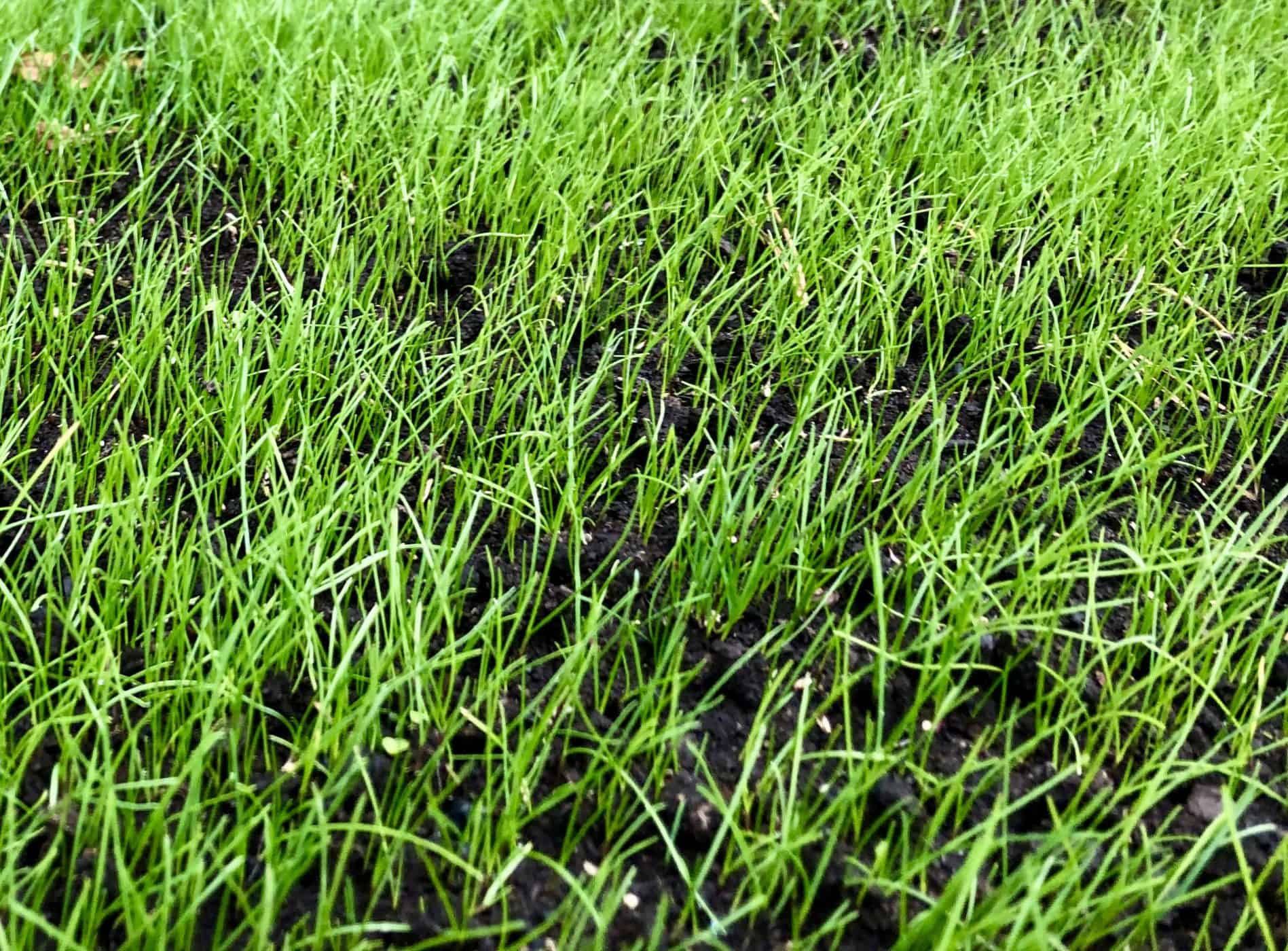
The best types of cool-season grass seed
Cool-season lawn grasses thrive in temperate climates and northern areas with warm summers and cool winters. These grasses prefer sunny areas but will tolerate some shade. Cool-season grasses are cold-tolerant but will discolor and enter dormancy in cool winter temperatures.
All types of cool-season turf grasses are commonly grown from grass seed. Turf grass sod is also available. Here are some of the pros and cons of the best types of grass seed for residential lawns in northern and temperate areas:
“Cool-season grasses, those commonly used in Northern lawns, grow well in the mild temperatures of spring and fall. In the summer, their growth slows; they may even go dormant (stop growing) during periods of hot weather. Extended heat and drought can kill cool-season grasses.”
Rodale’s Successful Organic Gardening: Lawns, Grasses and Groundcovers, by Lewis Hill & Nancy Hill
| Type of Grass Seed | Benefits | Drawbacks |
|---|---|---|
| Kentucky Bluegrass | – Rich, dark green color – Thin, soft blades – Good durability under foot traffic – Spreads easily to repair bare patches | – Seed takes several weeks to germinate – Lawn requires watering and fertilizer – Low shade-tolerance – Low drought-tolerance |
| Fine Fescue (Creeping Red Fescue, Chewings Fescue, Hard Fescue) | – Low maintenance – Dark green color – Thin, fine blades – Drought-tolerant – Shade-tolerant – Requires less water and added nitrogen | – Seed takes weeks to germinate – Less durable under foot traffic |
| Tall Fescue | – Very good durability under foot traffic – High drought-tolerance | – Slightly rougher blades – Requires warmer soil to germinate |
| Perennial Ryegrass | – Green color – Germinates in days, not weeks – Good durability under foot traffic | – Slightly thicker blades – Low shade-tolerance – Low drought-tolerance – Does not spread to fill in bare patches |
| Creeping Bentgrass | – Thin, soft blades – Bright green color – Dense, carpet-like texture – Can be mowed quite short – Cold-tolerant | – High maintenance – Low drought-tolerance – Requires frequent watering and aeration – Accumulates thatch quickly – Incompatible with other types of grass |
“A lawn of Kentucky bluegrass is often considered the lawn by which all other lawns are judged. Characterized by the deep green/blue color and the fine texture, Kentucky bluegrass is as durable as it is good looking.”
The Lawn Bible: How to Keep It Green, Groomed, and Growing Every Season of the Year, by David R. Mellor, Fenway Park’s Master Groundskeeper
Choosing the best cool-season grass seed for your dream lawn
So, for a top-notch residential lawn, choose a grass seed blend that contains mainly Kentucky Bluegrass. For a lawn in a shady spot or with low maintenance requirements, choose a grass seed that’s mainly Fine Fescue. To see quick results, Perennial Ryegrass is the best type of grass seed to choose from.
For a sunny sports field with minimal maintenance requirements, Tall Fescue is a great type of grass seed. For backyard golf putting greens where the turf is worth all the extra effort, Creeping Bentgrass is the right grass seed choice.
“Perennial ryegrass is often combined in seed mixes with Kentucky bluegrass because it establishes quickly, filling in the lawn while the bluegrass takes longer to grow. It has fine-textured, shiny blades that are deep green. It is often used in high traffic areas and well-used lawns as it stands up very well to wear.”
The Lawn Bible: How to Keep It Green, Groomed, and Growing Every Season of the Year, by David R. Mellor, Fenway Park’s Master Groundskeeper
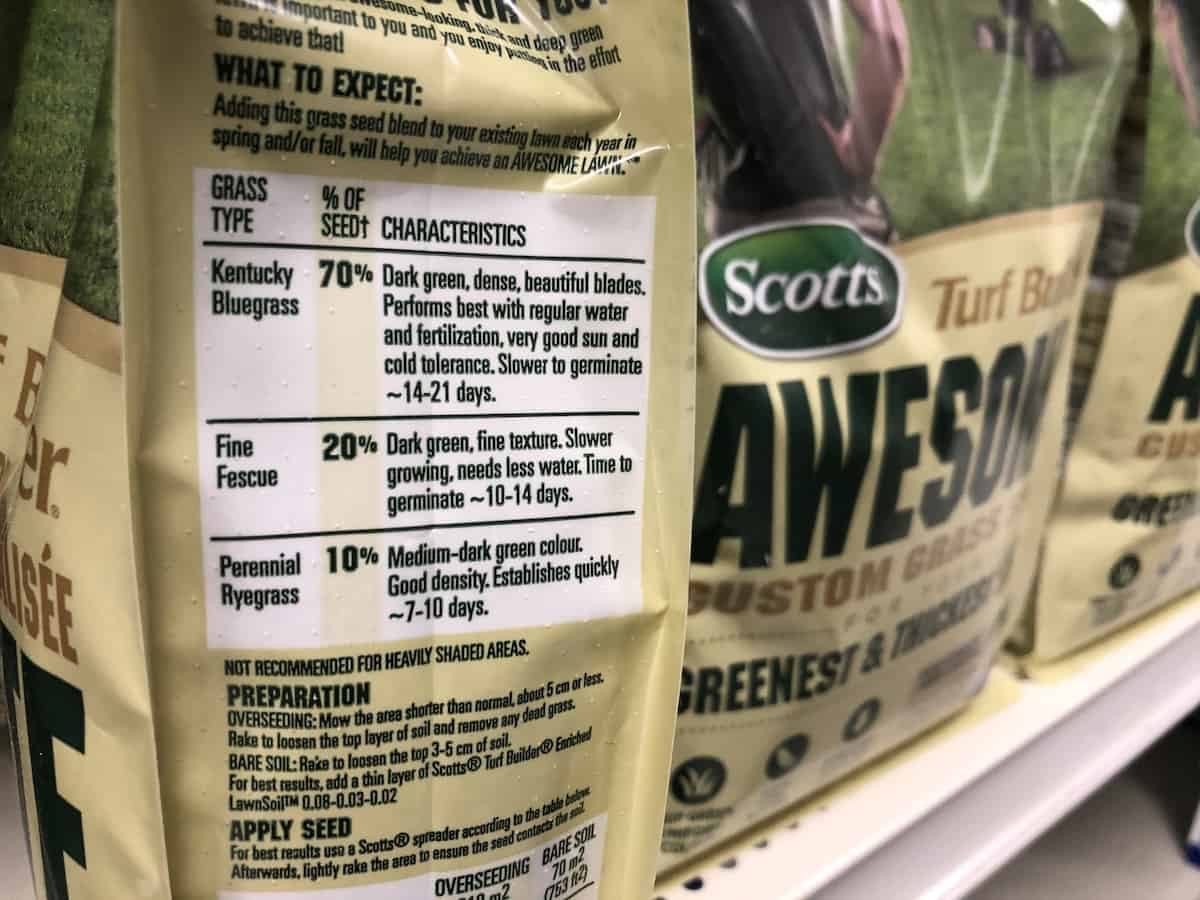
Cool-season grass seed types to avoid
Most lawn care enthusiasts skip grass seed mixes that contain Annual Ryegrass. Although it germinates quickly, annual ryegrass has a less desirable light-green color. It also is not tolerant of shade and rarely survives for more than one growing season (it doesn’t live through cold winter weather). This leaves bare patches in the lawn in the spring.
Rough bluegrass is another type of grass seed that is considered a low-quality filler. It is a light-green perennial grass that is considered a weed in many areas. Rough bluegrass is not the same as Kentucky bluegrass and is not an adequate substitute. Its shallow roots make it rather high-maintenance, despite the less-than-ideal appearance.
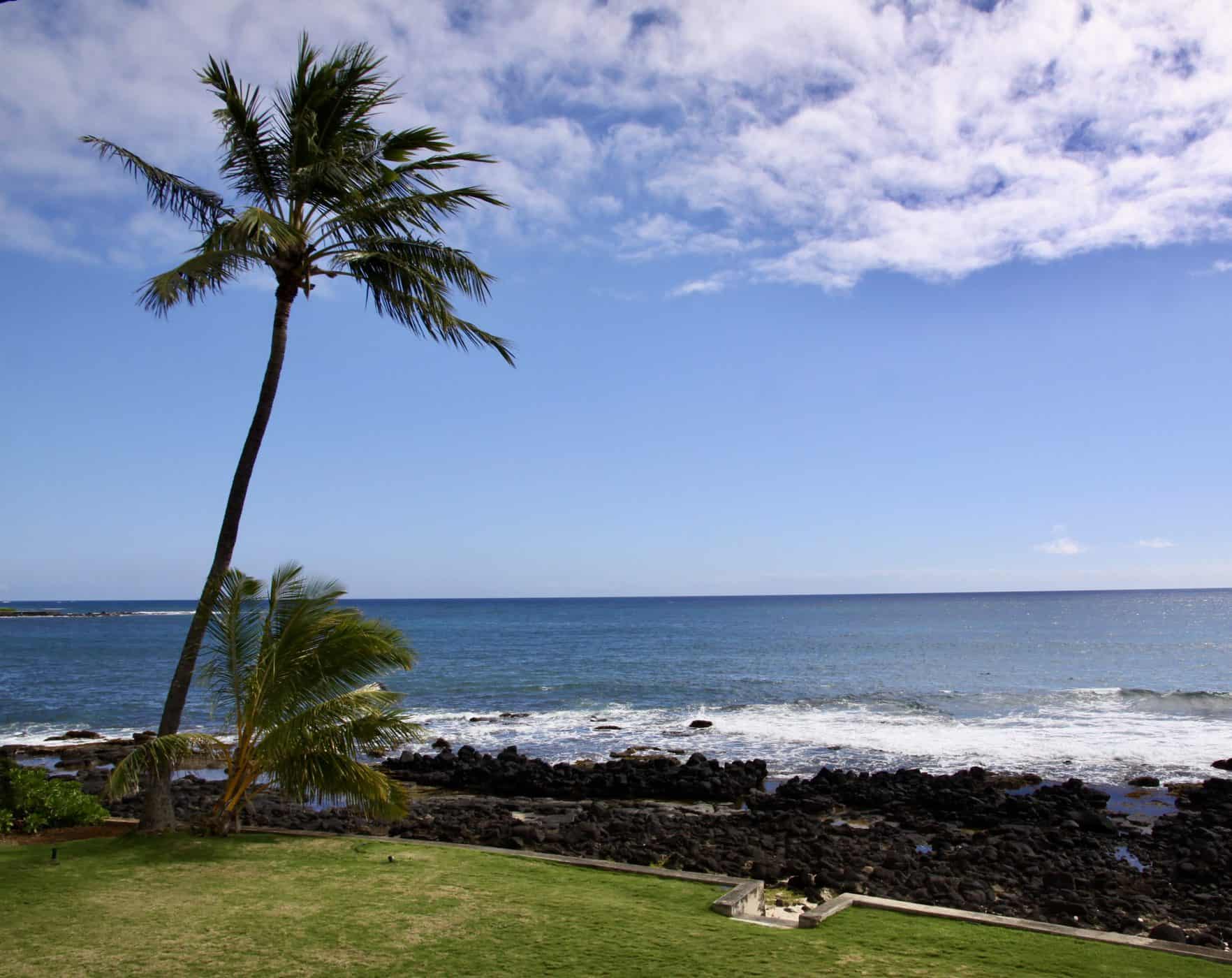
The best types of warm-season grass seed
Warm-season lawn grasses thrive in hot climates and southern areas. They are adapted to dry and tropical conditions. They love the sun and are tolerant of heat but may go brown and dormant over the winter.
Warm-season grasses are generally sold as plugs of existing plants but are increasingly available in grass seed form (like Scott’s Bermudagrass seed). Here are some of the pros and cons for the best types of grass seed for residential lawns in hot, southern climates:
“Warm-season grasses are best adapted to Southern gardens. These species grow best in late spring and summer; they slow down in fall and go dormant in winter. Warm-season grasses can be weakened or killed by cold winter temperatures.”
Rodale’s Successful Organic Gardening: Lawns, Grasses and Groundcovers, by Lewis Hill & Nancy Hill
| Type of Grass Seed | Benefits | Drawbacks |
|---|---|---|
| Bahia Grass | – Durable – Drought-tolerant – Shade-tolerant | – Coarse blades |
| Buffalo Grass | – Durable – Tin, fine Blades – Low maintenance – Drought-tolerant – Shade-tolerant | – Low shade tolerance |
| Bermuda Grass | – Easy to establish – Thin blades – Very durable – Drought-tolerant | – Medium maintenance – Requires frequent mowing, watering, fertilizing |
| Zoysia Grass | – Durable, dense turf – Drought-tolerant – Salt-tolerant – Shade-tolerant | – Coarse, wiry blades – Slow-growing (making plugs more popular than seed) |
| St. Augustine Grass | – Blue-green color – Durable – Dense turf – Shade-tolerant – Very drought-tolerant | – Medium maintenance – Forms thatch quickly – Requires frequent aeration – Generally purchased as sod, not seed |
Choosing the best warm-season grass seed for your dream lawn
So, for a lawn that’s both beautiful and durable, Bermuda Grass is a great choice for establishing a lawn from seed. Bermuda Grass is generally the best type of grass seed for a sports field or kids’ play area, as long as the lawn is getting the sunshine and maintenance it requires.
Bahia Grass and Zoysia Grass are also great choices for growing turf grass lawn in sandy soil. Zoysia, however, is very slow to establish from seed, so most homeowners buy trays of zoysia grass plugs instead of seeding the lawn.
“Bermuda grass is as popular for lawns in the south as Kentucky bluegrass is in the north. A good, low-maintenance lawn, the coarse-textured Bermuda grass grows well in poor soil and tolerates low mowing. It is salt tolerant and has deep roots, which makes it drought and heat tolerant.
The Lawn Bible: How to Keep It Green, Groomed, and Growing Every Season of the Year, by David R. Mellor, Fenway Park’s Master Groundskeeper
